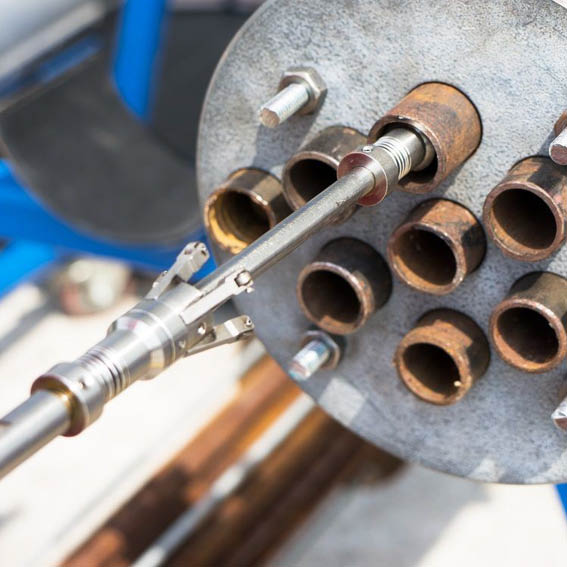Sigma provides ASNT/PCN/NAS-410 Level I, II, & III technicians and inspectors for Internal Rotary Inspection System (IRIS) to detect anomalies and metal loss in heat exchanger tubes.
IRIS is an NDT/NDE method using ultrasonic waves for testing tubes/pipes. The IRIS probe is inserted into a tube that is flooded with water, and the probe is pulled out slowly as the data is displayed and recorded. The ultrasonic beam allows detection of metal loss from the inside and outside of the tube wall.
The IRIS probe consists of a rotating mirror that directs the ultrasonic beam into the tube wall. The mirror is driven by a small turbine that is rotated by the pressure of water being pumped in. As the probe is pulled the spinning motion of the mirror results in a helical scan path.
One of the key settings in the procedure is to ensure that the ultrasonic pulse initiates in the very focus point at the center of the tube or pipe. An off-center pulse will show a distorted image of the tube due to the difference in the sound path for either side of the tube wall. For that reason, there are centering devices that help the operator to keep the turbine centered.
The transducer utilized for the inspection must be high frequency, high enough to bounce back at both the inner wall and the outer wall. The frequency range typically used for the piezoelectric transducer is from 10-25 MHz.
The technician analyses these measurements to determine the mechanical integrity of the tube/pipe and makes a pass/fail recommendation for plugging.
Positives
Negatives
Certified technicians are available for call-out or long-term assignments. Sigma provides turnkey IRIS inspection and reporting complete with equipment, consumables, vehicles (mileage), and accommodations required to perform Tubular Testing.
